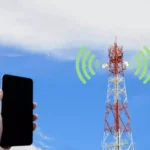
In a world where millions of smartphones are discarded annually, a quiet revolution is underway. Tech enthusiasts and researchers are finding new ways to repurpose these devices, not as e-waste, but as miniature data centers.
It may sound surprising, but old smartphones pack more computing power than some early supercomputers. With multi-core processors, decent RAM, and built-in storage, even a five-year-old smartphone can handle light computing tasks. Combine a few of them, and you have the ingredients for a small-scale data center.
So, what’s the point?
Micro data centers built from phones are being explored for edge computing—processing data closer to where it’s generated. In areas with limited access to cloud services or unstable internet, local processing using old smartphones can support applications such as weather stations, small websites, or community Wi-Fi systems.
They’re also green. Traditional data centers are energy-hungry, but smartphones are built to run efficiently. Running a cluster of repurposed devices uses far less power, and keeping them out of landfills reduces toxic e-waste.
A few real-world examples highlight the potential. Researchers at the University of Massachusetts Amherst created “PhoneStacks”—clusters of Android phones that ran simple AI tasks like facial recognition and language processing. Others have turned phones into low-cost Bitcoin nodes, mesh network hubs, or remote sensors.
Setting up a smartphone-based data center does have limitations. They’re not suitable for heavy-duty enterprise workloads. Battery swelling, limited I/O ports, and software compatibility issues can also be challenges. But with creative problem-solving—like powering them via USB hubs and installing lightweight Linux-based apps—these problems can be minimized.
The idea isn’t to replace modern cloud computing but to supplement it—especially in education, remote areas, or experimental tech projects. Imagine a school in a rural village using donated phones as servers for teaching programming or hosting offline content.
Repurposing smartphones as micro data centers is a step toward more sustainable, decentralized tech. It turns yesterday’s gadgets into tomorrow’s infrastructure—small, efficient, and surprisingly powerful.
So next time you upgrade your phone, don’t toss the old one in a drawer. With a little effort, it could help build the future—one app, one node, one phone at a time.




